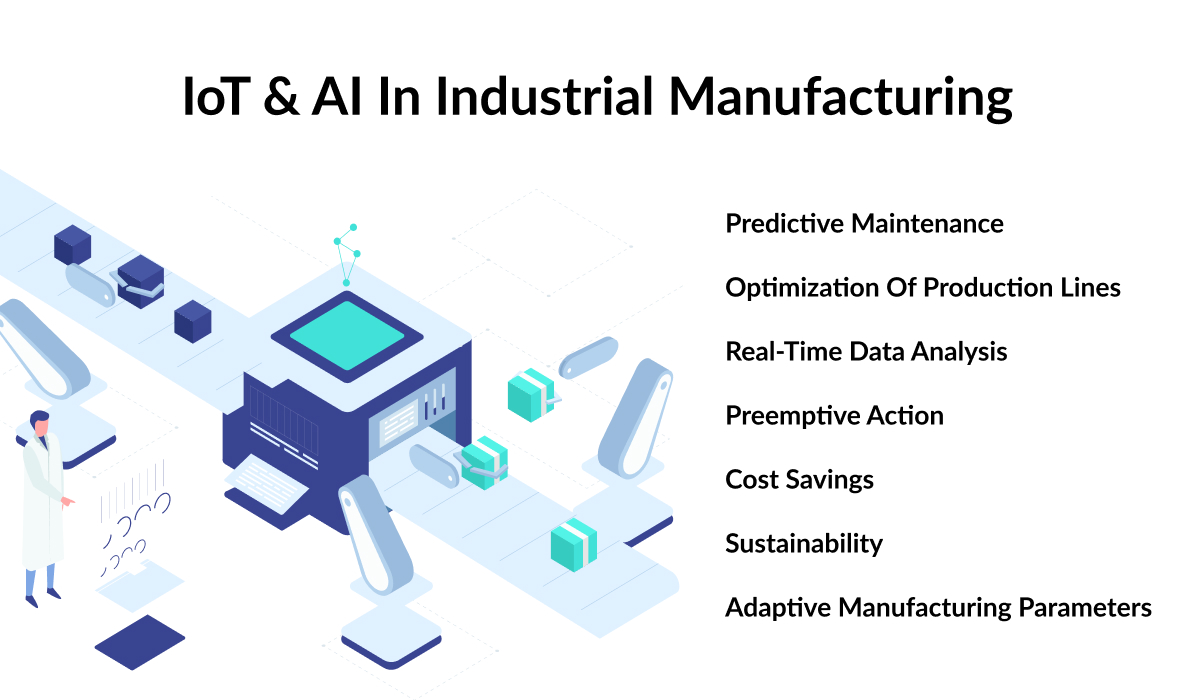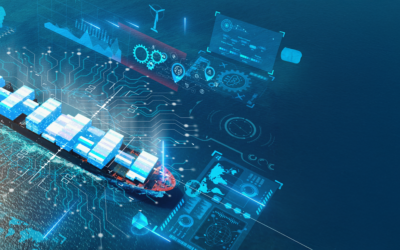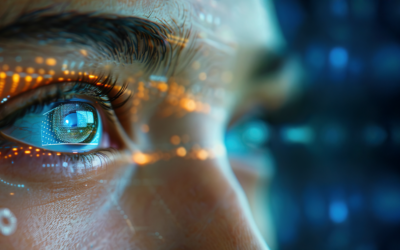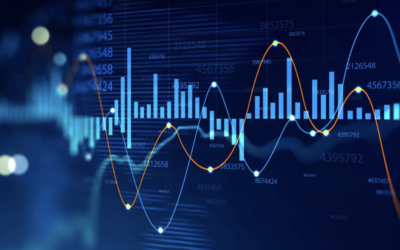How InnoBoost Merges AI with IoT for Future Applications
5 min read
Summary
Rarely has there been a technology that transformed industries as much as the Internet of Things (IoT). From smart homes that adjust to our preferences to factories where machines predict their own maintenance, it has ushered in an era of connectivity and efficiency previously unimaginable. Then artificial intelligence stepped onto the scene and changed everything. Now, we are looking at the future when intelligent automation becomes the backbone of every sector.
And InnoBoost is here to help you make it happen.
watsonx.ai & IoT
Before we move on to examining the points of convergence between these two technologies, it’s worth taking time to introduce what each of them is.
watsonx is IBM’s cutting-edge AI and data platform, designed specifically for the business sector. It simplifies the deployment of AI applications, manages data from any source, and encourages responsible AI practices within a unified platform.
It’s built on the principles of openness, specificity, trust, and empowerment—all to enable businesses to utilize and increase value with AI. As IBM’s Gold Partner, our experts are there to help you implement this incredible technology in any domain.
When we talk about the Internet of Things (IoT), we refer to the vast network of interconnected devices and objects that communicate through the Internet, collecting and exchanging data. IoT devices range from simple household objects to sophisticated industrial tools, all embedded with sensors, software, and other technologies to connect and exchange data with other devices and systems over the Internet.
This network facilitates a higher level of automation and integration in daily and professional tasks, making processes more efficient by leveraging data in real time.
When considered separately, each of these technologies sounds impressive and exciting. But their true power only comes up when they work together. So, let’s talk about InnoBoost’s solutions where these two merge into one.
Revolutionizing Smart Homes and Cities
IoT & AI-driven automation is capable of creating systems that can respond to direct commands and predict and adapt to individual preferences and needs.
For example, smart homes equipped with this technology can adjust heating, lighting, and even make coffee precisely when you need it, all by learning from your habits and preferences. This level of personalization and anticipation in automation is a significant leap towards creating living spaces that are not just intelligent but intuitively aligned with their inhabitants’ lifestyles.
But if we apply this technology to urban development, we can see that the solutions and their implications are much more drastic. From public safety to traffic congestion, it holds the potential to eliminate common challenges that plague most cities.
For example, through the deployment of sensors and AI-driven systems, traffic lights can dynamically adjust to real-time traffic conditions, and parking spaces can communicate availability directly to drivers. Additionally, smart surveillance systems enhance public safety by detecting and responding to unusual activities.
By optimizing energy consumption, managing waste more effectively, and conserving water, smart cities are, at the same time, reducing their environmental impact and helping the global society to become a self-sustaining ecosystem.
These examples perfectly show how integrating AI and IoT can lead to more efficient, safe, and sustainable urban living. Beyond convenience and efficiency, the solutions InnoBoost delivers mark the new era of sustainable urban living.

Transforming Industrial Manufacturing
Industrial manufacturing is another area that stands to gain the most through the integration of AI and IoT. By facilitating intelligent process automation, manufacturers can predict maintenance requirements before they become critical issues. With this foresight, they can minimize unexpected downtime and improve the efficiency and quality of production processes.
The ability to anticipate maintenance needs and optimize production lines in real time will also allow them to adapt to ever-changing conditions.
For example, if we embed IoT sensors into manufacturing equipment, they can continuously monitor the condition of machinery and send real-time data to AI systems. These AI systems can analyze the data to predict when a machine is likely to fail or need maintenance. This means that companies have time for preemptive action that would prevent costly production halts.
Additionally, these smart systems can adjust manufacturing parameters on the fly. For example, modifying the speed of a conveyor belt or the temperature in a kiln based on real-time product quality assessments.
This level of precision and adaptability ensures that products meet quality standards consistently while optimizing resource use. But along with increased productivity, there’s a word to be said about sustainability.

In combination with IoT, our AI solutions can automatically adjust machinery operations to non-peak energy hours or scale back production based on predictive demand analysis.
As a result, companies could save on costs while adopting a greener approach to manufacturing.
Innovation in Healthcare
The merger between AI and IoT allows healthcare systems to provide real-time, actionable insights into patient health and dramatically improve care delivery and patient outcomes. This means that providers can now monitor patient health with unprecedented precision and respond to issues as they arise, rather than in hindsight.
For example, an AI-driven diagnostic tool can analyze medical imaging faster and with greater accuracy than ever before and identify conditions that the human eye would most likely miss. With IoT, patients can wear devices that not only track vital signs but also analyze data to predict potential health crises before they occur. Should they occur, they instantly alert both the patient and their doctor.
This kind of proactive health management can significantly reduce emergency hospital visits and allow for timely intervention. As a result, patient outcomes would be improved, lives would be saved, and healthcare costs drastically reduced.
On the operational side, AI and IoT are streamlining healthcare administration and patient care processes. Put simply, they are making hospitals and clinics more efficient.
For instance, AI algorithms can predict patient admission rates and thereby help hospitals manage staffing and resources more effectively. Meanwhile, IoT devices in hospitals can track equipment in real time and ensure that critical tools are always available when needed.
Is Intelligent Automation the Future?
If we could summarize what exactly IoT and AI bring to the table in two words, it would be intelligent automation.
While automation, in general, aims to automate routine tasks, intelligent automation creates systems capable of learning from interactions, adapting to new challenges, and evolving over time to meet the dynamic needs of businesses and consumers alike.
Such systems go over and beyond simple automation, and create a futuristic reality where technology anticipates needs, optimizes operations, and innovates in response to changing environments.
Let’s take agriculture for example, an industry we haven’t mentioned yet, but which holds to gain most from this technology. AI-enabled IoT devices can continuously monitor soil moisture and nutrient levels, and adjust irrigation and fertilization in real time to optimize crop growth conditions. This not only increases yield but also conserves resources.
This example illustrates how intelligent automation combines efficiency with sustainability. But no matter which industry we take, the fact remains: AI and IoT can fundamentally change and improve how it operates.
This shift towards intelligent automation marks a new era for industries, where technology performs tasks but also contributes to strategic decision-making and innovation. And with InnoBoost, you can be at the very cutting edge of this progress.
The Final Word
The integration of AI and IoT technologies has long stopped being a futuristic vision. It is now a concrete reality.
Companies across industries are utilizing these technological miracles to create more robust, efficient, and sustainable models that will drive their growth for decades to come.
Whether you’re looking to optimize your operations, reduce environmental impact, or simply create more intelligent, responsive systems, InnoBoost has the technology and expertise to make it happen.
Let our experts take a look at your existing systems, and we will create an AI & IoT-driven solution that responds to your unique challenges.
Contact us, and we’ll help you harness this power and master the future!
You may also like…
Unlocking the Power of Custom AI with InstructLab
5 min readSummary In the dynamic landscape of artificial intelligence, the ability to create models tailored to unique business needs is more than a competitive edge—it's a necessity. InstructLab, a collaborative initiative from IBM and Red Hat, is revolutionizing AI...
Strengthening Authentication in the Digital Age with IBM Verify
5 min readSummary In today’s interconnected world, the importance of robust authentication systems cannot be overstated. As digitalization accelerates, safeguarding sensitive data and critical systems has become a top priority for businesses. Effective access...
From Data Chaos to Data Confidence: Real-World Use Cases of IBM Data Product Hub
5 min readSummary In a world where data streams in from every direction—transactions, patient records, supply chain logs, and more—businesses often face “data chaos.” Instead of powering innovation, their data sits scattered in different formats and systems, making it...




